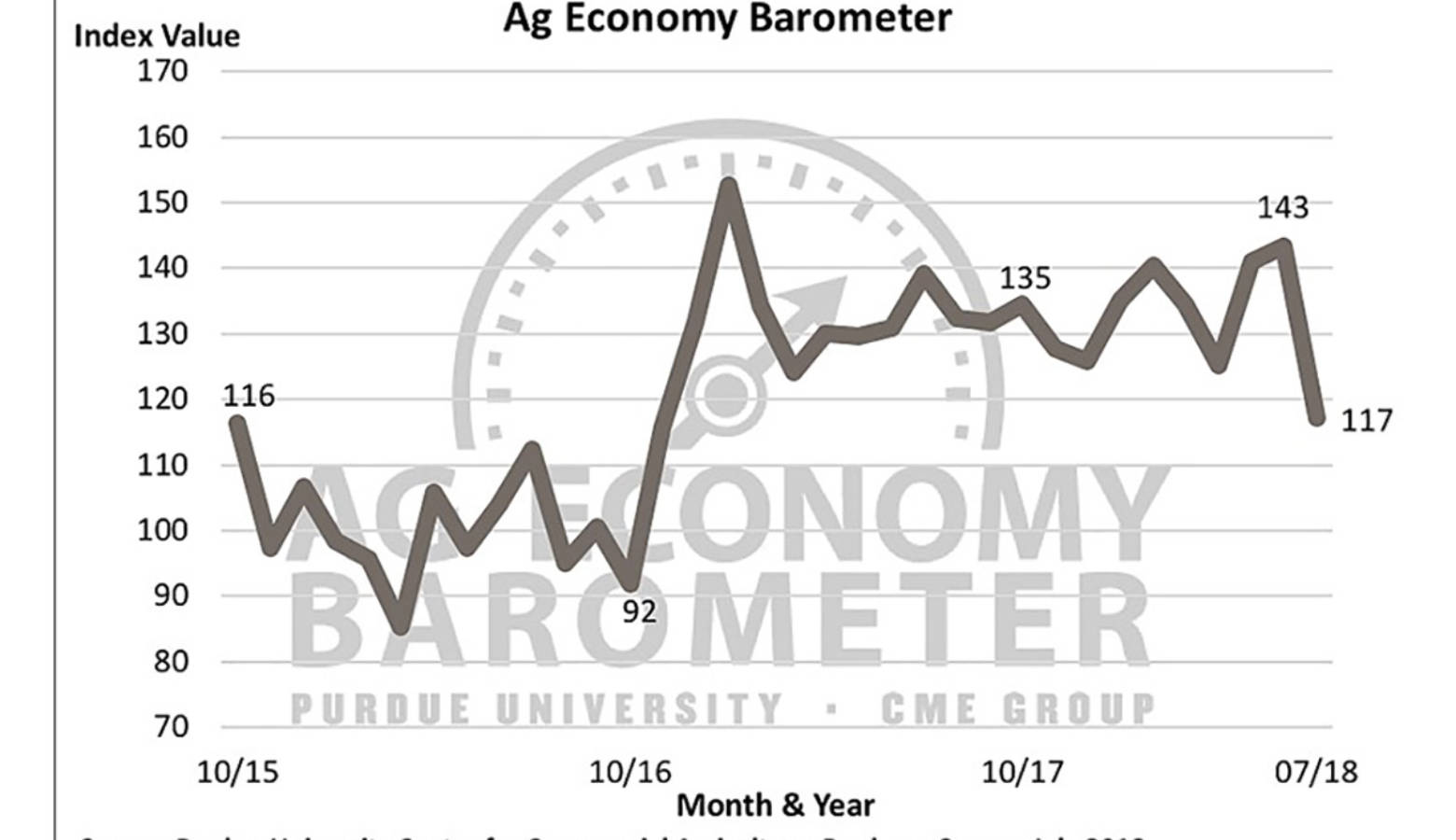Ag Barometer Sees Record Decline In Producer Sentiment

Purdue University’s Ag Economy Barometer, which measures producer sentiment, has seen record declines following establishment of the Trump administration’s tariffs. July’s declines were the biggest since the measure was first established in 2015.
Purdue Center for Commercial Agriculture Director Jim Mintert says the president’s trade war is causing fear of continued low commodity prices.
“People’s concerns about the trade conflict with China and the NAFTA countries has created a tremendous amount of angst among producers and I think that was reflected in the sentiment index this month,” he says.
After the 2016 election, Mintert says the sentiment barometer saw an increase similar to other indexes of the U.S. economy.
“On a wide-spread basis, people became more optimistic following the 2016 election,” he says.
While some optimism has been lost, levels are still higher than they were prior to the election.
“Going forward, I think one of the interesting things going to be to see whether or not we continue to lose optimism in the August survey or the September survey and whether the barometer stays above the levels we observed before the 2016 elections,” says Mintert.
In July’s survey, farmers were also asked if they believe it is likely that December corn prices will fall below $3.25 a bushel and November soybeans below $8 per bushel. Mintert says these price levels would cause a significant squeeze in cash flow for numerous farm operators.
“At those price levels, most farms in the corn belt can cover their variable production cost, but they can’t cover their fixed resources,” he says.
However, only 40 percent responded that they had that concern.
The barometer analyzes two things: current conditions and farmers’ future expectations. It is updated through a national monthly survey that Minternt says gauges producers’ perceptions of the underlying health of the agriculture production sector. The survey consists of five standard questions plus several other unique ones asked to 400 agriculature producers across the country.



